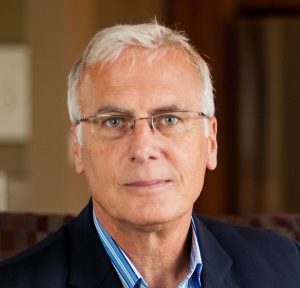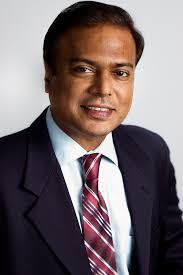
Employee Engagement is usually confused with Employee Happiness. However, it is much more than that. It is simply understood as the employee’s emotional investment in the company and its vision. Click here to check out a comprehensive guide on Employee Engagement.
It is a complex concept to understand with so many definitions available, and even more difficult to implement. With the onset of the global community, the number of opportunities for your best employees is not less.
Most managers think increasing pay, and simply by moving employees up the ladder is enough. Or, maybe arranging an office party will do the trick. However, the key is to make your employees feel cared for. This is how you will keep them from shifting companies.
How do you show you care? What employee engagement strategies and tactics do the experts in this field use? What are some new ideas that these brightest brains have come up with?
We asked global experts a few questions to understand their perspectives and approach. The aim is to learn and adopt better strategies for making the lives of managers a little easy.
Here is a list of employee engagement strategies and brilliant ideas from the horse’s mouth themselves.
1) Gordon Tredgold, CEO & Founder, Leadership Principles LLC
For him, Employee Engagement is the “difference between success and failure, and its a leaders number one job to get their teams engaged.”He explains what an engaged team is:
“Engaged teams go the extra distance, they deliver better services, and they achieve better results. Engaged employees stay longer with companies, they’re more committed and help build a culture that delivers sustainable success. Leaders engage their teams by giving them a sense of purpose, providing them opportunities to develop and advance, and putting them into positions where they can be successful.”
The real measure of employee engagement is the side effects and benefits of this practice. He explains, “If your company has high turnover, high absence then you have low engagement. If your company underperforms compared to others in your sector you have low engagement. Whereas if your staff work long hours without being asked, if they deliver above average results then you have high engagements.”
According to him, 95% of the times poor leadership is the reason for disengagement. So, the best practice would be to have in place effective leaders and opportunities for growth.
2) John Baldoni, President, Baldoni Consulting LLC
The winner of Lifetime Achievement Award for Trust, and author of a dozen books when asked shared his views on best practices of employee engagement. According to him, Employee Engagement is “Quite simply, employee engagement is do your people want to come to work and do they like the work they do. Too often we add too much consultant speak on topic of what should be a straightforward topic.”
He said, the best practice to achieve effective Employee Engagement is:
“Get involved with employees. Let them know you are willing to make difference. Align the purpose — what you do — to their purpose — what they do.”
“When managers listen and give employees voice in their work, things improve.”
3) David Zinger, Employee Engagement Speaker, Educator, & Consultant
The global Employee Engagement speaker defines it as “good work done well with others every day”. It is about benefiting both the individual and the company. He recommends using measures of employee engagement which are transparent and helps an employee map his own measure. The potential causes of disengagement according to him ranges “from individuals not knowing how to best engage themselves in their work to leadership and management thinking engagement is about “them”(the other employees) and not also about themselves.”
He says engagement is not mechanical and it is about creating an environment. For him engagement ‘thrives on respect, meaning, results, wellbeing, invitation, conversation, personal responsibility, and mutual accountability.’ He emphasizes that it is a daily process and not a program. Practicing communication, recognizing engagement and constantly making improvements will help create engaged employees.
4) David Ducheyne, President, hrpro.be
With more than 25 years of experience, his views on Employee Engagement can be summed up as:
“So it’s about leadership, culture and people strategies.”
He emphasizes on using principles of behavioral sciences and design thinking to help create the right environment. According to him, “there are no quick fixes and if management is not willing to invest time and effort in it, there is no way to move forward.”
5) Dave Millner, Executive Consulting Partner, IBM Workforce Science
The key global influencer understands Employee Engagement as the emotional connection an employee feels with the company. He emphasizes that it’s a part of the manager’s role to engage employees and is “nothing extra”. For him employee engagement is about 4 elements:
- The level of pride that the employees have in the organization that they work for
- Their level of satisfaction with the organization as a good place to come to work
- Their willingness to recommend the organization as being a good place to work
- Their level of commitment to the organization; would they move elsewhere?”
The main causes of disengagement revolve around lack of follow-ups, barriers to completing work, low levels of trust, non-involvement of employees and lack of actions in part of the managers. He sums up the best practices that have emerged from his experiences as having a clear strategy, high levels of employee involvement, demonstration of business outcomes of engagement, increasing accountability in employees and listening to the employees.
6) Dr.Robin Kiera, Start-Up and Product Professional, Speaker, Author, and Influencer
Being a Thought Leader, Dr. Robin Kierra has a unique proposition to measure employee engagement. He recommends reading reviews of the company on social media and the internet. He says ” to find out if my employees love or hate my company – I would start with the internet and social media though”
The key driver of employee engagement in his experience is the leader. The qualities demonstrated by the leader is the one which sets the trend for others to follow.
When asked about what would be an effective programme for engaging employees he said:
“Instead of designing sophisticated processes and rules that enable a 19th century culture of command and control, its crucial to see the employee, not as the enemy that needs to be ruled and regulated, but as one of the keys to success. Treat them that way. I experience companies that did this. “
7) Bob Kelleher, President, and Founder, The Employee Engagement Group
The author of Employee Engagement for Dummies and many more understands Employee Engagement as an outcome and not a “thing”. He recommends partnering with an outside firm to conduct surveys for employee engagement and calls it the “diagnostic tool”.
The most common cause according to his experience is lack of trust and a dysfunctional relation between the boss and employee. He speaks in detail about his observations and research in his keynote speech: Empathy is the New Black.
He insists on investing in communication for creating effective employee engagement, he says:
“Commit to communicating with all employees every month from the C-Suite level, weekly at the first line level. Invest more in training and development than your peer group. Pay at the 50% level, but incentivize at the 75% or higher level (engagement is about building a culture of high performance so one needs to sure they’re truly recognizing and paying for top performance).”
8) Perry Timms, Founder, and Chief Energy Officer, PTHR, People & Transformational HR Ltd.
When we asked this global leader and TedX speaker about his definition of Employee Engagement, he said:
“It’s a means to be an actively participating citizen of the world and a means to be part of a contribution to something greater than yourself.
How secure would car parks be without you? How much love can you put into making a coffee for someone? How much joy can you bring to someone helping them choose the perfect gift for a loved one and how much care can you put into the cleanest place for people in their twilight years?
It’s this engagement I like.”
So, what according to him is an effective programme for Employee Engagement?
“I’d, therefore, like to us unlock the secrets of how to create a working experience people love – not tolerate or are consumed by (because overwork is as bad as poor work).
One where we teach good corporate citizenship because we are liberating people to discover who they are, and all the time creating the best company to work for and to do business with.
It’s doable if we decouple from our revenue-based obsessive management and instead turn over businesses to thrive on the power of people set free.”
9) Darryl Dioso, Founder and Managing Partner, Resource Management Solutions Group
According to this expert, who has more than 20 years of experience, employee engagement needs to be measured and changes need to be IMPLEMENTED. He suggests measuring employee engagement by measuring employee turnover, surveys, and participation.
An effective practice to IMPLEMENT would be continuous improvement through intake sessions with employees.
10) Jill Christensen, Employee Engagement Expert, Jill Christensen International
A former Fortune 50 executive, swears by using standardized surveys for measuring employee engagement. According to her, it’s really simple to engage employees if you take care of these four key areas:
- Getting the right person in every chair
- Creating a Line of Sight
- Building a Two-Way Communication Culture
- Recognizing employees
She says the secret is to engage senior executives “Because if you think about it, senior leaders can get managers to do things that HR cannot!”
And when asked how do you engage senior employees? She answered:
“Data. Executives love numbers. Why? Because you don’t get to be an executive without learning a thing or two about numbers. Executives present numbers to their boards all the time and are judged on their ability to ensure the numbers are directionally correct. Therefore, gather all of the compelling data you can find which shows the correlation between employee engagement and profitable revenue growth, and share it with your senior leaders (data can be found on my website). Savvy leaders will get it and will agree to champion employee engagement and empower the managers to act.”
11) Matt Charney, Chief Content Officer at Allegis Global Solutions & Executive Editor at Recruiting Daily
For him, Employee Engagement is simply employees caring about their work. The measurement of engagement is subjective, according to him. He likes to use attrition rates to draw a correlation and ask employees for feedback. He says employees need to feel like they have a voice and that someone is listening in order to be engaged. He emphasizes the importance of work culture and chemistry to achieve engagement.
Giving the workforce a sense of ownership, aligning their interest with the company, trusting them and being flexible are the primary drivers of engagement. He explains further that,
“Employee engagement is an outcome, not a goal, so if employee engagement initiatives are done independently, then they’re really unlikely to be impactful. Ensuring employees are engaged should underscore and inform every business or human capital decision a company makes; engagement isn’t a stand-alone strategy. It’s a fundamental business value every business should value.”
12) Guy Ellis, Director, Courageous Workplaces Limited
He understands Employee Engagement as “maximizing employee productivity by creating the right conditions to motivate the employees”. He strongly believes in measuring engagement by productivity. He says,
“If I wanted to measure employee engagement in any specific organization, I’d start by asking what stops people from being the most productive they can be. Most employees can’t answer this very well because they don’t have a wide enough perspective so I’d interview senior managers, customers, and corporate functions, undertake process reviews and compare (where possible) with competitors. Only when you think you have an answer to this question, would I talk to employees.”
When asked about what practices should an organization, he recommends starting with the basics. “For me, start small and begin with the basics – upskill line managers, make sure employees have the best tools for the job, ensure they know what’s expected of them and how the organization will judge them.”.
13) Micky Chopra, Independent Consultant, and Advisory
Being, a veteran in his field of strategic thinking, and people management skills he understands Employee Engagement “on-going process to develop an employee (skills/talent) to ‘go-beyond’ with a purpose to achieve organization’s growth.”
A common cause of disengagement according to him is a “lack of a platform to share disengagement and lack of intent in addressing disengagement”
He recommends strengthening and working on the organization’s culture and advises to “create a culture towards harnessing and empowering talent, transparency and participation, open leadership, team building and people-centric”
14) Janine N.Truitt, Chief Innovations Officer, Talent Think Innovations, LLC
The global speaker understands Employee Engagement as the “extent to which employees feel connected and motivated to the work they do”
She enumerates the reasons for the disengagement. According to her, toxic leaders and hostile work environment makes employees feel helpless and can cause disengagement. She also talks about the importance of social assimilation in the workplace to avoid disengagement.
She highlights transparency in work and effective communication, as main drivers of employee engagement. The best practice according to her, is to understand the “why” of how the employees will benefit from this employment. She speaks about syncing the personal goals and operational objectives along with a regular evaluation of opportunities being offered. And lastly, she talks about balancing efforts made for individuals and for the collective workforce.
“A mix of initiatives that address individual development and the employee experience at scale will allow you to address any blind spots that can arise when relying solely on employee survey data and one-size-fits-all employee engagement programmes.”
15) Henry Stewart, Founder and Chief Happiness Officer, Happy Ltd.
The Chief Officer and Founder of Happy, does not use the term employee engagement. He stresses on creating a happy and fulfilled culture. For him “it’s not about improving your communications or agreeing with a new set of values to put on the wall and forget about. It’s about creating an organization which fundamentally trusts its people and give them the freedom, the resources and ability to do a truly great job.”
He believes in measuring happiness and fulfillment of his employees by simply asking the employees. The driver of employee engagement in this fast-moving world according to him is having a few restrictive policies and more trust in the employees. A way he ensures this in his company is by letting employees choose their own managers and the role of the manager is to be a coach. He says a manager “is somebody who cares about you, who supports you (and challenges you) and helps you find your own solutions.” This approach is clearly working as Happy was ranked among the top 20 workplaces in the UK for 5 consecutive years.
16) Brad Federman, Chief Operating Officer, F&H Solutions Group
The Forbes Coach understands employee engagement as “higher profits and better attendance”. He highlights that employees don’t salute and say yes, but ask why. There are no more safety nets, all employees want a competitive work environment with opportunities to grow. He calls this “new loyalty”.”Giving it their all and questioning current reality. Both the employer and the employee have to give something to make it work and they both get something in return.”
According to him, the reasons for disengagement are personal. One common reason he talks about is the brand value of the company. He says, “When their organization has a strong respected brand they are more likely to be engaged. One aspect of the brand is the ability for the brand to impact the local and/or broader community. Especially with the younger generations, employees want to feel they are making a difference. They want to know that their organization is more than a profit center.”
The best practice to engage employees is to not make it a program. Instead, weave it into the fabric of the work culture. It should reflect every day in meetings, relations and in the management style.
17) Nigel Paine, Owner, nigelpaine.com
He focuses on building great workplaces by promoting creativity, innovation, value based leadership and learning. For him Employee Engagement is offering discretionary effort over and above the role. The boost in productivity encourages employees to offer more discretionary effort, which in turn creates more enageged employees.
To measure Employee Engagement he recommends simply asking about and discussing the working environment with the employees. He reiterates the triumvirate outlined by Dan Pink in his book Drive where he argues that when staff have no autonomy, mastery or purpose in their work they become increasingly disengaged. According to him there are four lessons for building an effective employee engagement program, first is to simply understand the reality of the organization, next is to negotiate what steps are to taken for improvement, followed by making these changes and delivering on promises, final step is to monitor the impact constantly.
18) Rajesh Padmanabhan, Director & Group CHRO, Welspun Group
He understands Employee Engagement as the passion the employees feel towards the company and the extent to which they voluntarily own the purpose. He talks about measuring employee engagement by using pulse surveys, the number of meetings missed and feedback.
He highlights the reasons for disengagement as an unsupportive team, no trust in leadership and clash between personal values and that of the company.
According to him, three ingredients are essentials for making employee engagement a reality, these are
- Design initiatives keeping in mind the values of the organization
- Use technology as the base for immediate communication, connect, & engagement
- Build an inclusive and diverse workforce
19) Carmen (Shirkey) Collins, Social Media Lead, Talent Brand, Cisco
The 2017 communicator of the year engages employees at Cisco by encouraging them to share their stories on social media. The stories of employees are way more trusted compared to a brand saying it. In order to drive this engagement, she believes it’s important that the employees understand the WHY and then to trust them to carry out the work in their own way.
The measurement of engagement differs from team to team, for the internal employee communication team CISCO measures it by the share of voice in social, the reach they get, how much engagement (preferably the engagement RATE) they get on each social channel, how many people are clicking to visit their website, how many people actually go through the process and apply, etc.
She says the best practice to gain employee engagement is to encourage their individuality, treat them as VIPs and share the metrics with them to let them know how they are benefiting the company.
20) Amber Lloyd, Global Leader HCM Strategy & Customer Engagement, Infor
The global leader of HCM strategy and Customer Engagement at Infor understands that Employee Engagement is often misunderstood as happiness. For her “being engaged boils down the factors that make you do your best and deliver the best possible outcomes in the workplace.” She believes it’s about the pulse of the organization and recommends talking transparently with employees to assess engagement.
For her driving employee engagement depends on providing the right mix of factors to the employee. She says,
“Regardless of an employee’s generation, I believe it’s offering a personalized experience to each employee, having the flexibility to support the needs of that employee. For some employees, this can mean flexible work schedules so they can ultimately support the demands of their family, it can mean working on a product, project that they are excited about, or it can simply mean being recognized for key contributions. The important thing to remember here is it’s never just one thing, it’s a combination of all these factors and the nuances vary by person.”
The best employee engagement practice according to her “is one that takes into account a number of factors to empower the employee – equitable compensation, employee recognition programs (both financial, personal and social), employee development, career growth and opportunity, career transparency (view to what’s possible within the organization for each employee), comradery with colleagues, clear vision and values from the organization. ”
21) Aaron Tucker, Managing Director, motivationWorks
For him, Employee Engagement is having a meaningful experience at work. Being the managing director of MotivationWorks, he encourages to measure employee engagement by motivational quality. He highlights that using surveys and other tools will just indicate a lag in employee engagement without any insight into the causes.
The main factors for disengagement according to him is “low fulfillment and lack of support from team members and leader”. And he highlights three main drivers to be “autonomy, relatedness, and mastery”. He says,
“We all know that we need to satisfy our hunger to survive, but we also need to have autonomy, relatedness, and mastery to thrive at work and feel engaged. Teaching and empowering leaders in these needs and mentoring them in how to use them has proven to increase performance, enjoyment, and learning.”
22) Siobhan McHale, Head of Human Resources, Dulux Group, Culture Change Expert
The head of Human Resources at Dulux started her career as an organizational psychologist. She draws insights from her personal experiences to help us understand employee engagement and its implications in the workplace. According to her, managers should take frequent walks to understand if the employees are engaged or not. For her employee engagement always depends on the leader. She strongly agrees that “Culture is always leader-led”
She sums up her seven learnings into these steps, first is to assess the underlying causes of employee engagement, second is to break the pattern followed by consolidation. She says, “The ABCs of change can help to create an engaged culture where employees go ‘above and beyond’ to deliver outstanding service on a daily basis.”
It’s evident that even experts face challenges when it comes to employee engagement. Its benefits are already known and I am sure with these recommendations from the pioneers will help you reap the benefits.
A Quick Overview
- It’s important to maintain transparency with the employees
- Feedback should be an ongoing process, and not an annual activity
- The effort of managers has to reflect on the work culture of the company
- Aligning interests of individuals with the company goes a long way in achieving engagement
- Treat your employees as VIPs and make them feel respected
- Start with the basics and then alter the practices according to your organizational needs
- Effective communication about expectations from both managers and employees will help create a win-win situation.
- Lastly, think of employee engagement as the essence of your company, and not an HR programme
After all, like Doug Conant said, “To win in the marketplace, you must win in the workplace”
Let us know if you found this post useful. Also, we would love to hear your ideas on employee engagement.






















[…] employee-engagement-complete-guide Check out what experts say about engaging employees Experts share their strategies to Engage Employees […]
[…] 22 Experts share their Employee Engagement Strategies April 30, 2018 […]
Great comments all, but where are the examples of engagement transformed by these experts. Surely the advice makes sense, but if you were presenting your concept to a CEO, what would be the example used you use for a transformation occurring. Telling stories about companies which are highly engaged does nothing for a company looking for help to cause a measurable engagement transformation. Something beyond lowering turnover, the causes of which are too numerous to assign credit. There is nothing more scarce in the employee engagement world than a research paper, academic or commercial, client case study, white paper or even anyone using results as a marketing tool. For example this approach in use for twenty years. Only the CEO can force change, so the CEO must sponsor the EE initiative. Only a third party reporting to the CEO can suspend the culture, politics, and silos which serve as the primary blockers of change, and believe me; the employees are mindful of this as they respond to the survey. So what we do when presenting to the CEO is to begin with what our clients have experienced and base 75% of our fees on the results. For example: With this approach, the CEO asked one simple question. The third party acted as agents for the employee’s suggestions, debating blockers all the way to the CEO’s staff meeting. Suggestions from 12,000 of 23,000 employees resulted in a $300 million SG&A savings, a $200 million capital plan reduction, a $45 million inventory reduction, sent a few corporate bullies home, killed or altered hundreds of policies and saved 1800 jobs. Those results occurred over ten-weeks. I guess my question is, with all the experts there are, why is there no focus on the lack of results as mentioned in several reports, like AON and Gallup. At some point, CEOs are going to read about the billions being spent on EE sans results and will likely ask their team, hey what’s the story? What then? Of course, this is not a polite conversation, but it is indeed needed. Nowhere can you find any examples of EE transformation occurring to the extent the transformation impacted the business as Gallup has implied.
[…] efficient and ready to commit extra hours to get work done. A lot of costs is saved because the engaged workforce is willing to stay with the company. Loyal workforce helps to attract more new, qualified […]
[…] Employee engagement is not really about the offsite team building activity or the end of project party. Employees are as humans as customers are. They have similar human needs that are related to […]
[…] doesn’t’. So how can organizations improve workplace productivity? What can be done to improve employee engagement? What can be done to retain top talent and help them to be more […]
[…] leaves you in a conundrum. How can you keep your top performers (along with everyone else) engaged and happy in their roles with your company? Are there ways you can make them feel like they have […]
[…] Employee engagement takes employee satisfaction a step further. Instead of an employee simply enjoying their job, they are committed to helping their company achieve all of their goals and do everything in their power to make that happen. In order for an employee to be engaged, they need to be able to find meaning, autonomy, growth, impact, and connection in their career. Click here to view a comprehensive guide and learn more about employee engagement. […]
[…] is directly related to diversity in the workplace. Long story short, the relationship between employee engagement and workplace diversity is quite straightforward i.e. when your employees feel comfortable, content […]
[…] if you’re trying to develop a strategy to boost employee engagement, then we understand if you feel a little overwhelmed. In fact, that’s why we created this guide. […]
[…] amongst many others, have all used gamification to increase business productivity through employee engagement. Gamification is about using the psychology of gaming to motivate your […]
[…] their skills and career goals, they will give back and invest in your company. That’s how you build engagement and a strong-skilled staff at the same […]
[…] qualitative and quantitative essence of the connection between the enterprise and its employees. See what experts have to say about their employee engagement […]